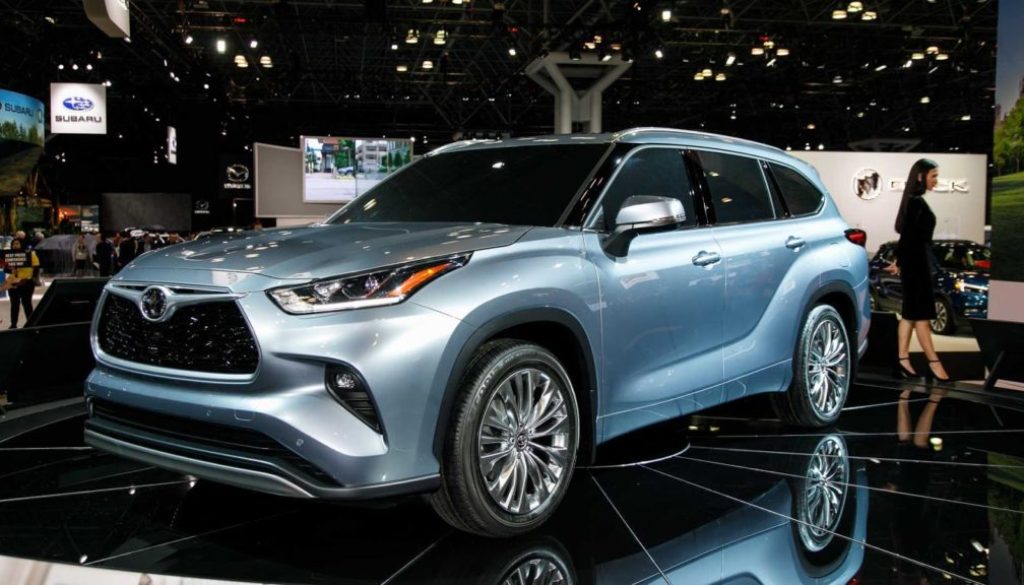Buyers have more choices than ever for a three-row family crossover SUV. But don’t forget about one of the models that started it all. The redesigned 2020 Toyota Highlander steps back into the mix with key changes that should continue to make it a top pick in the class.
The fourth-generation Highlander rides atop a new platform that Toyota says provides improved agility and ride quality. It’s 2.4 inches longer than before, and Toyota says that additional length goes toward expanding the cargo area and providing more third-row legroom. The 2020 Highlander also has more sculpted body panels and sleeker exterior styling.
Finally Time to (Car)Play
Toyota, one of the few Apple CarPlay holdouts, finally gives buyers an alternative to its Entune software with the new Highlander. The 2020 model will offer both Apple CarPlay and Android Auto (along with optional wireless phone charging) in addition to Waze and Amazon Alexa functionality. Most trim levels get an 8-inch touchscreen interface, while the top Platinum trim gets a 12-inch screen.
The Toyota Safety Sense 2.0 bundle of driver aids comes standard on all levels and includes automatic emergency braking and lane keeping and centering assist. Automatic high beams and road sign detection are other added features. Navigation systems for hybrid models even have a predictive driving function that can learn a driver’s regular habits and routes. They can also optimize battery charging while decelerating, driving in traffic, or when climbing or descending grades, for example.
Now With a Stronger Base
Buyers of the Highlander base trim are no longer stuck with a four-cylinder engine — the standard engine across the 2020 Highlander range is the same 295-horsepower V6 available in prior years. It’s paired with an eight-speed transmission and should be good for 22 mpg in combined city/highway driving.
The Highlander’s optional all-wheel drive also gets an update, with the base system capable of splitting engine torque to the front and rear wheels equally. A more advanced system, available on upper trims, can further fine-tune the amount of power reaching each wheel and also comes with driver-selectable traction modes optimized for mud, sand, and dirt. Like its predecessor, the new Highlander can tow up to 5,000 pounds.
While one four-cylinder disappears, another appears. For 2020, the Highlander Hybrid gets a new 2.5-liter four-cylinder engine. While the hybrid’s new four-cylinder powertrain generates less power than the former hybrid’s V6 configuration — 240 hp compared to 306 hp — Toyota says the new hybrid can return 34 mpg combined, compared to the last-gen hybrid’s 28 mpg.
Toyota will offer the 2020 Highlander in five trim levels: L, LE, XLE, Limited and Platinum. Base L and LE trims feature cloth upholstery and a second-row bench seat for eight-passenger seating.
XLE trims get simulated leather and standard second-row captain’s chairs, reducing capacity to seven passengers; the bench seat is optional. The same goes for the Limited trim, although it comes standard with 20-inch wheels, perforated leather upholstery, and a 1,200-watt JBL sound system. The Platinum is the Highlander at its most luxurious, offering embossed leather seats, heated second-row seats, a 12.3-inch touchscreen and a panoramic sunroof.
2020 Highlander Price and Release Date
The 2020 Highlander goes on sale in December, with the Highlander Hybrid to follow in February. Toyota hadn’t announced pricing as of publication time, but we expect it to be similar to that of the outgoing Highlander. That means it might start at about $34,000 and range up to about $46,000 for the Platinum. The hybrid will likely cost a few grand more, but the fuel savings will offset the cost after a few years of ownership.




